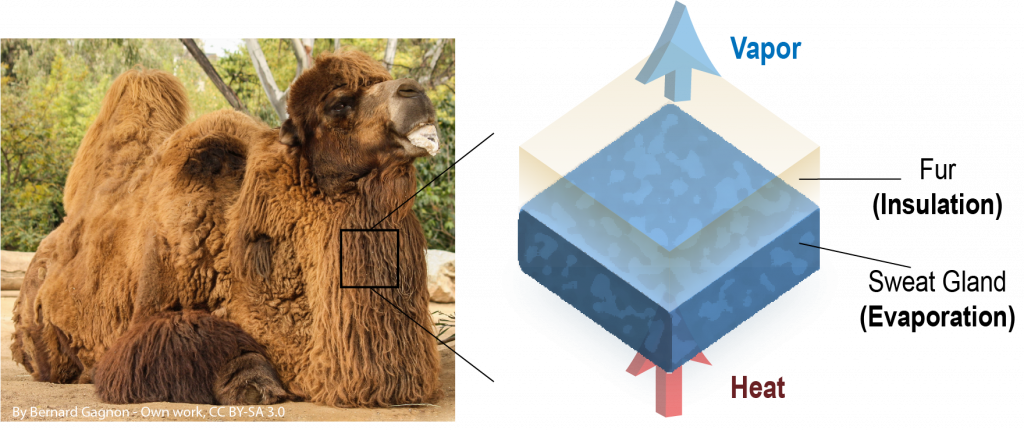
Passive thermal management strategies show promise to alleviate the ever-increasing global energy demand for cooling which is projected to triple in 2050. Passive cooling also provides viable pathways to distribution and storage of food and pharmaceuticals in underdeveloped areas, given that >10% of the world’s population still have no access to electricity. Due to the ease of implementation and potential high cooling powers, evaporative cooling has emerged as one of the most promising passive cooling solutions. However, the state-of-the-art evaporative cooling technologies are largely limited by environmental heating. Here, inspired by the fur layer of desert animals, we address this critical challenge with a transparent bilayer made of hydrogels and aerogels, which allows for evaporative cooling and cuts parasitic heat gain at the same time. Our bilayer cooling structure significantly can increase the effective cooling time by 400% compared to a conventional single layer design.
Related Article: Joule 2020
Media Coverage: MIT News, Popular Mechanics, New Scientist, Smithsonian Magazine, E&E News, BBC Science Focus